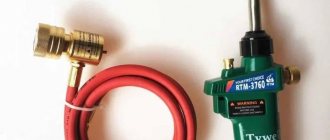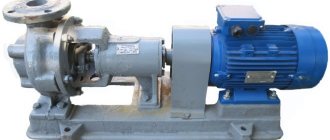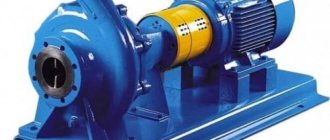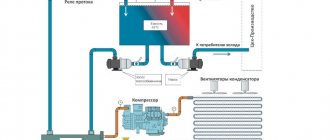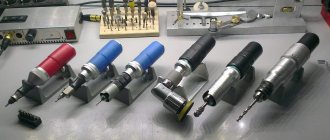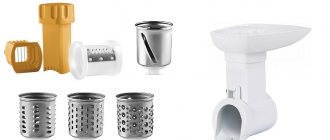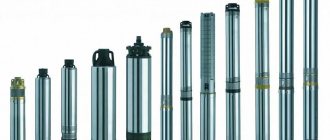Laying trenches is necessary for the construction of a pipeline or as the initial stage of foundation construction.
Digging by hand is a complex and labor-intensive process that requires a lot of time. Compared to mechanized digging, manual digging is unprofitable, but it is useful when there are no conditions on the site for the use of bulldozers.
To dig a trench with your own hands from scratch, you need to familiarize yourself with the digging technology, as well as find out what tools are used for this.
When is this method appropriate?
Trenches are dug in areas for installing a water supply system, laying a cable or gas pipeline, as well as for connecting a sewer pipe to a septic tank.
There are several factors that determine shoveling instead of bulldozing:
- Communications have been laid on the site. It happens that the house has already been built, the water supply has been laid, but the owners decided to install a sewer system after the construction of the house. Neither the place nor the area had been prepared in advance for this. Then you need to dig a trench on an existing piece of land. Trees and bushes can grow on the ground, and electrical cables and gas pipelines can also be laid. In order not to damage these communications with mechanized digging, they use a shovel to dig a trench.
- There is no possibility for equipment to enter the site. It happens that there is a gas pipe near the gate of the facility, which prevents equipment from driving deep into the site. Too narrow streets in dacha areas also cause the use of manual labor.
- Soil type. For highly frozen soil, as well as for hard rocks and gravel, only machine digging is suitable. If the site has loam, sand or soft but loose soil, you can easily dig a trench with your own hands using shovels.
It is not practical to dig a trench by hand if it is too long.
Small trenches for short sections of water, cable, sewer or gas lines can be dug with a shovel using your own labor. This will not only save money, but will help make the trenches the way they should be according to the project.
Advantages
They collect mown grass and weeds with a pitchfork, scatter fertilizers around the area; many summer residents use the tool instead of a shovel. Digging forks have the following advantages:
- easy to clean from stuck lumps;
- are light in weight;
- enters the ground without effort.
Unlike a shovel, a pitchfork cannot cut through and destroy earthworms, which benefit the garden. They are convenient for digging up potatoes, loosening beds, turning hay.
Types of DIY digging tools
To develop soil from a trench, several types of tools are used:
Trench . This tool is equipped with a rectangular bayonet and has a pointed tip. The design helps clear the walls of the trench without polluting the nearby soil. When clearing space for a trench, such a shovel will help remove plant roots that are too deep.- Bayonet. Designed for digging up soil. They are also convenient for digging trenches, since the bayonet has a slightly pointed end. They come in rectangular or square shape. If the bayonet is flat and square, it is convenient for them to dig out tightly compacted soil. If the bayonet is curved, it is perfect for digging out the earth from a trench.
- Drainage (narrow) . A drainage shovel is also called narrow because of the special width of its scoop. It is not only narrow, but long and is just suitable for creating holes and trenches. A drainage shovel with a curved scoop can easily remove soil from a dug trench. The tool is equipped with a special platform for the foot - it allows you to save your shoes and prevent pain that can occur when using a regular shovel.
- Sovkovaya. Necessary for transporting bulk material. For example, you can dig up soil with a bayonet or drainage shovel, and with a shovel you can collect it and bring it to the surface. This tool has wide and flat bayonets at the edges.
- Scraper. Used additionally to remove debris. They are also mounted on a long handle and will help quickly remove excess dirt from the trench.
- In the shape of a crescent. They are used to cut small turf and remove the fertile layer, you can use a small crescent-shaped spatula.
Shovel "Tornado"
The Tornado shovel differs from the above mentioned shovels in its digger design. Because of the ease of performing the work, gardeners call the “Tornado” a woman’s shovel. The tool is dismountable. The device is very simple.
The base is a metal rod. At the top of the rod there is a movable, convenient handle for making the necessary turns. At the bottom there are metal pins with sharp teeth that are curved and arranged counterclockwise.
When working, the tool is installed vertically to the soil and the handle is turned a full turn, driving the teeth into the ground. The effort required when working is minimal, the back is straight, only the arms work.
Shovel "Tornado". © Novobyt
Advantages of the Tornado shovel
The Tornado shovel is not only a digger. With this tool you can also:
- loosen the soil in the beds without driving the teeth all the way into the soil;
- cultivate the soil around bushes and trees;
- weed the beds between the rows;
- remove dry weeds and other debris from flower beds and beds;
- it is easy to remove perennial weeds from the field, for example, wheatgrass and field bindweed;
- dig holes for planting seedlings;
- replant strawberries and wild strawberries without damaging the roots.
Inventory selection rules
To choose a shovel, focus on the following criteria:
- Bucket material. Shovels are produced from titanium, rail steel, aluminum, wood and plastic. The latter option is definitely not suitable for digging a trench, since after a couple of hours such a shovel will become unusable. Wooden tools are also not relevant when excavating soil. Titanium shovels are resistant to aggressive environments and wet soil does not stick to them. The disadvantage of such a tool is its price and the fragility of the metal. Aluminum tools are durable, lightweight, but expensive. The best option is a stainless steel bucket part.
- Handle material. It can be made of aluminum, carbon fiber, steel or wood. The most common option is wood, but the durability of this material is low. Shovels with an aluminum handle are reliable, while those with a carbon fiber handle are lightweight and do not corrode. A plastic handle is fragile, while a steel handle is heavy.
- type . For each type of work when digging a trench, it is worth selecting a specific type of shovel. You should not use a shovel tool for digging, and a bayonet tool for extracting soil to the surface.
- Weight. An aluminum shovel is considered the lightest; a completely steel tool will be the heaviest.
The classic choice for digging a trench would be a shovel with a wooden handle and a stainless steel bucket part. It has an average weight, is easy to handle, and will last a long time thanks to the materials used.
Garden wheelbarrows
Ground work requires moving heavy loads all the time. Earth, manure, compost - the materials are not very light, and the garden bed is most often not located next to the compost heap. Using buckets is tiring and distracts from the main task. It is much more convenient when you always have a wheelbarrow filled with the necessary raw materials at hand. There are two types of wheelbarrows: construction and garden.
| The garden wheel's support allows it to stand firmly on the ground when loading and unloading. |
- Construction trucks are designed for transporting heavy loads such as sand, cement, bricks. They have a solid base, a reinforced body and sometimes pneumatic wheels. After construction is completed, the construction wheelbarrow can be used without hesitation for garden maintenance.
Construction wheelbarrows are made of steel. Steel can be galvanized or painted. Both options protect the material from corrosion, but the paint is less reliable, since over time it can peel off, then rust will appear at the site of the scratch.
- Gardeners are used by summer residents to transport light soils and soils, vegetables, fruits and herbs. Garden carts are usually lighter and more compact. Some lightweight wheelbarrows are made of plastic; their strength, of course, is low, but everyone can work with them.
The basis of the chassis of a wheelbarrow is wheels. The equipment can be moved on one, two or four wheels. Single-wheeled structures are the most maneuverable, but with a heavy load they are more difficult to control. Two- and four-wheelers are more stable, but they are difficult to navigate in narrow places.
How to dig by hand?
It is more expedient to dig a trench manually if its depth is no more than 150 cm. Such trenches are often equipped for laying cables with a voltage of no more than 35 kV, as well as for water supply, gas pipelines and sewerage.
First you need to prepare all the tools, and also have a digging plan in hand. If communications have already been laid on the site, you need to have a diagram of their location so that during the digging process you do not damage the utility networks. You also first need to uproot trees and bushes and remove vegetation along the path of the trench.
There is a simple way to make a trench with your own hands:
Marking . Wooden or metal pegs are used for marking. They are installed around the entire perimeter, with a cord pulled between them. Such markings will help you not to deviate from the work plan and visually show their volume.- Loosening the soil . Using a bayonet shovel, the soil is loosened inside the trench. The blows are applied in a vertical position. To do this, take a shovel with good weight so that it has destructive power. If you come across areas with particularly strong soil, you can use a crowbar.
- Soil excavation . A shovel is used for work. If you need to get a cross-section of a trench, remove the earth by hand. The procedure is carried out only with gloves.
The second and third steps are repeated until the trench reaches the desired size. All the earth excavated from the trench is piled up near the trench. It is better to do this at a distance of 50 cm from the track. The close location of the soil will help to use it more efficiently when backfilling depth.
To achieve a perfectly vertical surface of the trench wall, use a plumb line.
The best hay forks
Palisade 63801
For the manufacture of the torso and working part of this model, the manufacturer used medium-carbon steel. Also, these structural elements are coated with powder enamel. This will protect the product from corrosion and other harmful environmental factors. The height of the working part is 32 cm.
The handle “Palisad 63801” is made of the highest grade elm, and the top is coated with matte varnish. Thanks to this, the product will not only retain its presentable appearance for a long time, but will also be convenient when working. On top of the handle there is a polypropylene handle. The presence of a handle reduces the load when performing work. The diameter of the handle is 40 mm, and the total length of the tool is 125 cm. The working part is attached to the handle using glue and rivets, which is very reliable even with frequent use.
The average cost is 1100 rubles.
Polisad 63801
Advantages:
- Durable working part;
- Reliable fastening;
- Availability of a handle;
- Quality;
- Verified manufacturer.
Flaws:
- Hard to find on sale.
Belotta
To manufacture the working part of this model, the manufacturer used high-quality steel. Due to the fact that there are hardened blades, as well as protection against corrosion, operation will be comfortable, reliable and long. It is also worth noting that the steel for the manufacture of the working part has undergone special treatment, due to this the teeth will not deform or break, even under heavy loads.
To make the cutting, the manufacturer used the highest quality wood. It also has a D-shaped handle, which improves the grip of the tool and reduces the load when working. Due to the ergonomic design, the handle fits comfortably in the hand and does not slip during use. To extend the service life of the forks, the manufacturer coated the handle with a varnish layer.
The average cost is 3,500 rubles.
Belotta pitchfork
Advantages:
- Ergonomic design;
- Sharp blades;
- Reliable design;
- European manufacturer.
Flaws:
- High price.
Price for digging services
To calculate the cost of manual trench digging with a shovel, take into account the type of soil, the depth and length of the trench, the urgency of the order, and seasonality. Manual labor is always paid higher than mechanized labor, so digging with a shovel will cost more than ordering a bulldozer. It is more profitable to dig a trench in the summer, since in winter the soil can seriously freeze and workers will take more effort and time to dig.
Additionally, it is worth focusing on the need to backfill the soil: if this service is needed, then you will have to pay additional money. On average, one cube of manual digging of a trench with a shovel in Moscow and the Moscow region will cost 1,000 rubles. In winter, the cost of work will cost twice as much.
If you order a large volume of work, you can save 100 rubles per cubic meter of land.
Prices per linear meter vary depending on the city and region . For example, in the capital, manual digging with a shovel for 1 linear meter will cost 300 rubles. Such a trench will have a depth of 100 cm and is suitable for laying cables. In small towns and regions of Russia, the same service will cost less – from 150 rubles per linear meter.
Difficult terrain and rocky soil increase workers' wages several times.
Miracle shovels “Mole”, “Mole-B” and “Plowman”
The miracle shovels “Krot” and “Krot-B”, “Plowman” differ from the “Digger” in certain details - the design and type of handle (metal, solid, rounded), soil grip width (25-40 cm), digging depth 15- 30 cm), but have the same advantages. They all work on the principle of double forks moving one through the other. They loosen the soil without turning over the soil.
Miracle shovel "Mole". © krsk.au
Pros and cons of hand digging
There are advantages and disadvantages to the procedure of digging a trench using a shovel.
List of main advantages:
- you can build a trench in a hard-to-reach place;
- you can use this method for digging in an area where there is already a communications network;
- you can independently adjust the depth and change the technique in the process;
- the method is suitable for working with rocky and clay soil;
- Doing it yourself can save you money.
Despite the large number of advantages, this method has several disadvantages. You will have to make great efforts to overcome such physical labor, as well as spend a lot of time. When ordering services from construction companies, you will have to pay a large sum compared to bulldozer digging. Digging with a shovel is not suitable when a large amount of work is expected.
